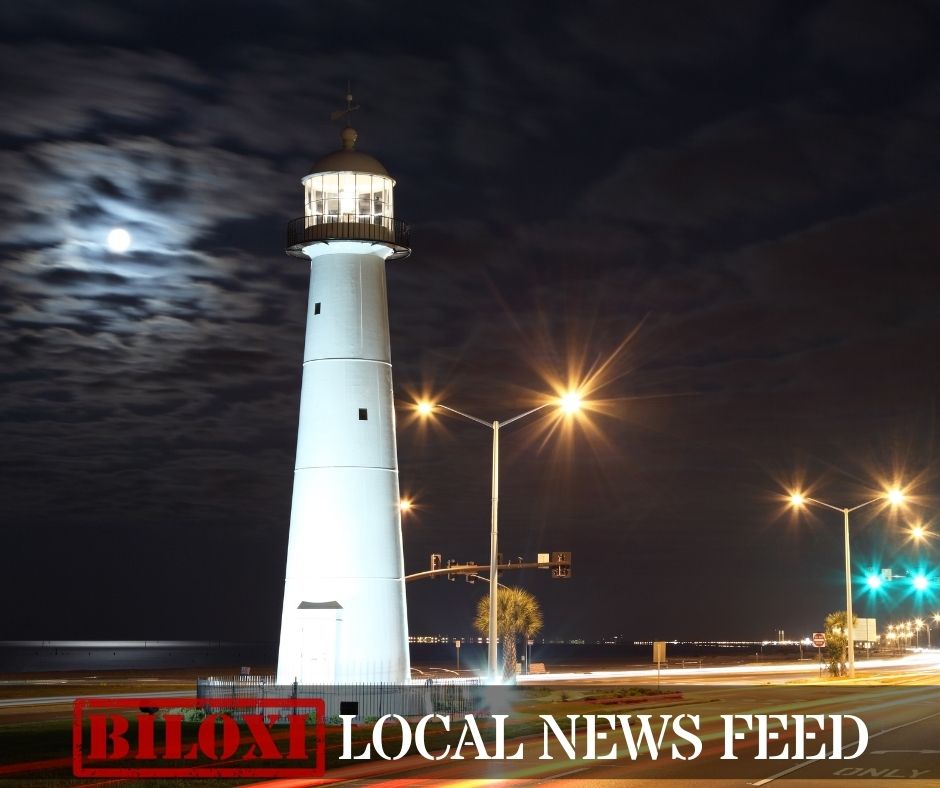News from the South - Arkansas News Feed
Arkansas tax revenue dips, prompting adjustments in forecasts
by Antoinette Grajeda, Arkansas Advocate
May 22, 2025
Arkansas’ chief financial officer on Thursday attributed a $374.2 million decrease in net available revenue for the current fiscal year to a tax deadline extension due to severe weather and tax cuts in recent years.
Members of the Arkansas Legislative Council questioned Department of Finance and Administration Secretary Jim Hudson about a revised general revenue forecast released Wednesday that projects Fiscal Year 2025 net available revenue will reach $6.526 billion, a 5.4% decrease from FY 2024.
The FY 2025 surplus is expected to be $214.8 million, more than three times less than the $698.4 million surplus in FY 2024.
Because the governor issued executive orders authorizing the extension of the deadline for individual and corporate income tax payments to July 31, some of the revenue originally expected for FY 2025, which ends on June 30, will now shift to FY 2026, Hudson said.
“It’s not a net loss of revenue, it’s just more of a timing effect of it. So we’ll see some leakage of revenue both on the personal side and the corporate side out of FY 25 into FY 26,” Hudson said. “We’ve done some estimating on that, but we really don’t know how many people will take advantage of that yet.”
Arkansas governor signs tax, appropriation bills after special legislative session ends
In a May 21 letter to the ALC chairs, Hudson said the revenue decline compared to FY 2024 is also expected because of the impact of individual and corporate income tax rate reductions passed in two special sessions of the 94th General Assembly.
State lawmakers in September 2023 approved legislation to cut the top corporate income tax rate from 5.1% to 4.8% and the top individual income tax rate from 4.7% to 4.4%. The rate changes took effect on Jan. 1, 2024.
The General Assembly approved another round of cuts in June 2024 that lowered the top corporate income tax rate from 4.8% to 4.3% and the top individual income tax rate from 4.4% to 3.9%, retroactive to Jan. 1, 2024. The tax cuts went into effect immediately upon the governor’s signature.
Year-to-date, net available revenues have declined by $224.7 million from the same time last year, resulting in collections that are $52.2 million over forecast at that point, according to the new DFA report.
Sales and use tax collections have also been marginally below forecast and individual income taxes have been above forecast primarily due to estimated payments. Corporate income tax collections are below forecast, according to the report.
“Corporate collections are notoriously volatile, they’re even more so I’d say right now just given the number of tax cuts that we’ve done with some retroactive effect, so there could be a forecasting component to this,” Hudson said.
DFA’s report, which was released Wednesday as required by state law, included revised forecasts for FY 2026 and FY 2027. Net available revenues are expected to reach $6.679 billion, an increase of 152.8 million above FY 2025. The projected FY 2026 surplus is $185.1 million.
FY 2027 net available revenue is expected to reach $6.88 billion, an increase of $201.3 million above FY 2026.
The revised projections are lower than the Nov. 14, 2024 forecast, which predicted $6.794 billion in net available revenue for FY 2026 and $6.997 billion for FY 2027. The adjustments are “largely attributable to shifts in economic conditions,” according to the May 21 report.
The revenue forecast is based on S&P Global Market Intelligence’s baseline economic forecast, according to the report. The S&P, one of three major stock market indexes, has had a volatile year as the market reacts to threats by President Donald Trump to levy steep tariffs.
Need to get in touch?
Have a news tip?
“There’s a lot of speculation about the impact of tariffs, where the economy’s going,” Greenbrier Republican Rep. Stephen Meeks said Thursday. “…is any of that driving the need and is there anything looking forward that we need to be concerned about revenues coming into the state?”
Hudson responded that reductions made to the revenue forecast were “almost entirely driven by macroeconomic considerations.” Tariffs are a big component of forecasting, but Hudson noted it’s more the perception of the potential impact of tariffs that’s affecting the market instead of actual tariffs because many have been paused, he said.
Earlier this month, the United States and China agreed to lower steep tariffs for 90 days, States Newsroom reported. U.S. tariffs on Chinese goods dropped to a universal 10% baseline from the 145% Trump imposed in April. A 20% emergency tariff announced in February on all products because of illicit fentanyl chemicals in China remained in place.
The back and forth on tariffs has caused uncertainty, which the market hates, Hudson said. However, the state’s chief financial officer said he believes “the potential upside from tariffs could be significant” for Arkansas if the result is trade agreements that are more favorable to the U.S. than they are today.
“I think particularly for Arkansas, if our agri exports — we get access to certain foreign markets that we’re currently closed off to, that could be a significant benefit to the state,” he said. “But at this point, we don’t know what the actual long-term benefits will be. Because of the uncertainty, analysts have reduced the projected growth; we’re following suit.”
YOU MAKE OUR WORK POSSIBLE.
Arkansas Advocate is part of States Newsroom, a nonprofit news network supported by grants and a coalition of donors as a 501c(3) public charity. Arkansas Advocate maintains editorial independence. Contact Editor Sonny Albarado for questions: info@arkansasadvocate.com.
The post Arkansas tax revenue dips, prompting adjustments in forecasts appeared first on arkansasadvocate.com
Note: The following A.I. based commentary is not part of the original article, reproduced above, but is offered in the hopes that it will promote greater media literacy and critical thinking, by making any potential bias more visible to the reader –Staff Editor.
Political Bias Rating: Centrist
This content presents a factual and balanced overview of Arkansas’ state budget situation, focusing on budget forecasts, tax changes, and economic conditions without visible partisan commentary or rhetorical framing. It objectively reports statements from government officials, legislative actions involving tax cuts, and economic uncertainties, aiming to inform readers rather than persuade toward a political perspective. The article relies on official data and quotes from both government and legislative representatives, indicating a neutral stance typical of centrist reporting.
News from the South - Arkansas News Feed
‘This is what we all work for’: Longest term foster child in Arkansas adopted
by Ainsley Platt, Arkansas Advocate
August 25, 2025
Even the judge was smiling by the end of Cozy Dietrich’s adoption hearing.
Cozy had been in foster care longer than any other person in Arkansas’ foster system — until Monday morning, when Anna and Tim Dietrich of Little Rock adopted the nonverbal 19-year-old. He took his new family’s last name.
An atmosphere of joy dominated the small Pulaski County Circuit Court hearing room where his adoption was finalized. When Circuit Judge Tjuana Byrd Manning brought the hearing to a close, the celebration started. The lights dimmed, and court staff — Manning included — pulled out flashing, multi-colored lights as Justin Timberlake’s “Don’t Stop the Feeling” played over the courtroom’s speakers and the standing-room-only audience clapped and cheered.
For many, the celebration was warranted. Cozy entered foster care in October 2010, and has been available for adoption since October 2011, according to a Department of Human Services spokesperson. In all, Cozy spent nearly 15 years in Arkansas’ foster system.
Anna Dietrich said she and her husband had always been open to adopting, but had been waiting for the right person. Anna Dietrich has long worked within the state’s foster system as a logistics coordinator for Project Zero, an Arkansas nonprofit dedicated to placing every child in a loving, permanent home.
Cozy’s disabilities meant having a family “with understanding, patience, and love would be instrumental in supporting” him, according to his Project Zero Heart Gallery page. The Heart Gallery has profiles of adoptable children in Arkansas to help match them with adoptive families.
“To say yes to one was to say no to others,” Anna Dietrich said. “The Lord was going to have to make it clear who was ours. He’s just made it abundantly clear.”
Cozy is their first child.
The Dietrichs were clearly thrilled about the adoption. Anna could be seen beaming at her new son as he ate peanut butter crackers and communicated via hand signals with a companion in the front row of the small gallery before the adoption hearing started.
GET THE MORNING HEADLINES.
Newly-confirmed Department of Human Services Secretary Janet Mann also attended and choked up after the hearing when congratulating the Dietrich family.
“This is what we all work for,” she said. “This is the inspirational example of how every child deserves a family.”
Not every foster child goes up for adoption. According to Tiffany Wright, the director of DHS’ Division of Child and Family Services, the vast majority that enter the foster system return to their families, but roughly 200 are currently waiting for adoptive families.
In fiscal year 2023, the most recent year with available data, over 36,000 children nationwide remained in foster care despite being available for adoption, according to the National Council for Adoption. Of the more than 184,000 children who exited the nation’s foster care systems that year, 27% were adopted.
“Youth who enter care often endure trauma or have medical conditions that make finding a family hard, but we will never give up. We work to identify an appropriate family that can provide for a child in the long term. That’s what happened in today’s case,” Wright said.
Cozy’s adoption was also significant due to who his adoptive parents were.
“Anna has championed and featured children in the Heart Gallery, and works hard to find adoptive families for them,” Wright said. “There are countless children living happy lives with adoptive families across our state because of the work of Anna and Project Zero.”
Adopting a child isn’t as straightforward as filling out a form, Wright said. It’s a long process that involves home inspections, information sharing with interested families and transitional visits. Even when a suitable family is identified, adoptees also have to have lived with them for a certain period of time before the adoption can be finalized.
“You have to be in an adoptive home for six months, that’s typically the trigger that you can finalize the adoption,” Wright said.
YOU MAKE OUR WORK POSSIBLE.
Arkansas Advocate is part of States Newsroom, a nonprofit news network supported by grants and a coalition of donors as a 501c(3) public charity. Arkansas Advocate maintains editorial independence. Contact Editor Sonny Albarado for questions: info@arkansasadvocate.com.
The post ‘This is what we all work for’: Longest term foster child in Arkansas adopted appeared first on arkansasadvocate.com
Note: The following A.I. based commentary is not part of the original article, reproduced above, but is offered in the hopes that it will promote greater media literacy and critical thinking, by making any potential bias more visible to the reader –Staff Editor.
Political Bias Rating: Centrist
This content presents a straightforward, human-interest story focused on the adoption of a foster child and the efforts of individuals and organizations involved in the foster care system. It avoids partisan language or political framing, emphasizing compassion, community support, and the functioning of social services. The tone is positive and factual, appealing broadly without aligning with a particular political ideology.
News from the South - Arkansas News Feed
Health insurance will cost more for millions of Americans — especially rural residents
by Shalina Chatlani, Stateline, Arkansas Advocate
August 22, 2025
A combination of Trump administration policies will make health care coverage more expensive for people who purchase plans from health insurance marketplaces — and rural residents will be hit the hardest, according to a new analysis.
Researchers from the Century Foundation say Trump administration policies — especially its refusal to ask Congress to extend Biden-era tax credits that are set to expire at the end of this year — will boost out-of-pocket premiums by 93% in the 32 states that allow the federal government to operate their Affordable Care Act insurance marketplaces. New rules and tariffs will have a smaller impact.
Rural county residents in those states will see an increase of 107%, while residents of urban counties will pay 89% more, according to the analysis by the Century Foundation, a left-leaning research nonprofit.
Insurers participating in the Affordable Care Act marketplaces are proposing a median premium increase of 18% for 2026 — the biggest jump since 2018 and 11 points more than the growth from 2024 to this year. That bump would come on top of the increase resulting from the expiration of the tax credits and the other policy changes.
About 2.8 million people who are enrolled in marketplace plans in the 32 states live in rural counties, including 776,000 adults between the ages of 55 to 64 and more than 223,000 children, according to the Century Foundation.
“Rural residents tend to be older. They may be more likely to have chronic illness at the same time,” said Jeanne Lambrew, director of health care reform at the foundation. “It costs more, both because they have somewhat greater needs and less access to health care.”
The researchers calculated that average annual premiums for rural residents will increase by $760 — 28% more than the expected average increase for urban residents. States where rural enrollees are expected to see the highest cost increases are Wyoming ($1,943), Alaska ($1,835), and Illinois ($1,700).
Many of the states with a large number of rural residents have chosen not to expand Medicaid under the Affordable Care Act, meaning many people who earn between 100% and 138% of the federal poverty level, between $15,650 and $21,597 for an individual, get their coverage from an insurance marketplace, Lambrew said.
Of the seven states where 10% or more of rural residents are enrolled in marketplace plans (Alabama, Mississippi, Nebraska, North Carolina, South Carolina, Texas and Wyoming), only two — Nebraska and North Carolina — have expanded Medicaid.
State officials in Pennsylvania recently advised residents who use the marketplace that they should closely examine the plans that are available.
“This year, even more than previous years, Pennsylvanians should consider shopping around to find the best plans to meet their individual needs, at a price that makes sense for their current financial situation,” Pennsylvania Insurance Commissioner Michael Humphreys said in a statement released at the beginning of this month.
Lambrew said the increases will force many people to forgo insurance altogether.
“It’s harmful for those individuals in terms of their own health and life expectancy. It’s harmful for our providers, because they’re now dealing with people who are sicker and in the wrong settings, and it’s kind of expensive for our society,” Lambrew said.
“We know health insurance matters, so having these large potential increases on uninsured Americans is distressing.”
Stateline is part of States Newsroom, a nonprofit news network supported by grants and a coalition of donors as a 501c(3) public charity. Stateline maintains editorial independence. Contact Editor Scott S. Greenberger for questions: info@stateline.org.
Arkansas Advocate is part of States Newsroom, a nonprofit news network supported by grants and a coalition of donors as a 501c(3) public charity. Arkansas Advocate maintains editorial independence. Contact Editor Sonny Albarado for questions: info@arkansasadvocate.com.
The post Health insurance will cost more for millions of Americans — especially rural residents appeared first on arkansasadvocate.com
Note: The following A.I. based commentary is not part of the original article, reproduced above, but is offered in the hopes that it will promote greater media literacy and critical thinking, by making any potential bias more visible to the reader –Staff Editor.
Political Bias Rating: Center-Left
The content presents a critical view of Trump administration policies and highlights the negative impact on healthcare affordability, particularly for rural residents. It references analysis from the Century Foundation, a left-leaning think tank, and emphasizes concerns about the expiration of Biden-era tax credits and Medicaid expansion. While it focuses on policy effects without overt partisan language, the framing and sources suggest a center-left perspective that supports expanded healthcare access and government intervention to mitigate premium increases.
News from the South - Arkansas News Feed
New I-55 bridge between Arkansas, Tennessee named after region’s three ‘Kings’
by Sonny Albarado, Arkansas Advocate
August 21, 2025
A long-planned new Interstate 55 bridge connecting Arkansas and Tennessee will be known as Kings’ Crossing, officials from the two states announced this week.
The new name “honors three transformative figures known as ‘Kings’” — civil rights martyr Dr. Martin Luther King Jr., bluesman B.B. King and rock’n’roll star Elvis Presley, according to a press release from the Arkansas Department of Transportation. The project had been named “America’s River Crossing,” according to previous news releases. The Arkansas Highway Commission and Tennessee General Assembly officially adopted the new moniker.
The bridge will replace the existing 75-year-old Memphis-Arkansas Bridge that carries I-55 traffic between West Memphis and Memphis. The new bridge is being funded by $400 million from the federal Rebuilding American Infrastructure with Sustainability and Equity (RAISE) program and $200 million each from Arkansas and Tennessee, making it the single largest transportation investment in both states, according to the press release.
The narrow existing bridge will be replaced with a larger structure designed to meet modern seismic codes, as it sits on the New Madrid fault line, officials said.
“It’s only fitting to name this vital crossing after three historic figures from this region,” said ARDOT Director Jared Wiley. “It truly is the result of a regional effort that will benefit industry across this national corridor and the thousands of individuals who depend on this connection each day.”
Tennessee Department of Transportation Commissioner Will Reid said Kings’ Crossing is a “symbol of our collective history, heritage, and the enduring spirit of unity that defines this region. Naming this bridge in honor of these gentlemen pays tribute to their extraordinary legacies — individuals who transcended barriers, fostered cultural exchange, and used their talents to build bridges between people.”
The Federal Highway Administration has approved a draft environmental assessment for the project, and public hearings will be held in November, according to TDOT’s website.
Design is underway, and right-of-way coordination should begin later this year, according to ARDOT’s press release. Construction is estimated to start in fiscal year 2026.
For more information about the proposed project, visit TDOT’s website.
Arkansas Advocate is part of States Newsroom, a nonprofit news network supported by grants and a coalition of donors as a 501c(3) public charity. Arkansas Advocate maintains editorial independence. Contact Editor Sonny Albarado for questions: info@arkansasadvocate.com.
The post New I-55 bridge between Arkansas, Tennessee named after region’s three ‘Kings’ appeared first on arkansasadvocate.com
Note: The following A.I. based commentary is not part of the original article, reproduced above, but is offered in the hopes that it will promote greater media literacy and critical thinking, by making any potential bias more visible to the reader –Staff Editor.
Political Bias Rating: Centrist
The content presents a straightforward news report about the naming and construction of a new Interstate 55 bridge, highlighting bipartisan cooperation and honoring widely respected historical and cultural figures. It focuses on infrastructure development and regional collaboration without promoting a particular political ideology or agenda, reflecting a neutral and balanced perspective.
-
News from the South - Alabama News Feed7 days ago
U.S. agriculture secretary announces end to subsidies for solar panels on farmland
-
News from the South - Kentucky News Feed6 days ago
First of its kind clinical trial offers new hope for Kentuckians at risk of dementia
-
News from the South - Georgia News Feed7 days ago
Don't eat this shrimp sold at Walmart due to possible radiation contamination: FDA
-
News from the South - Arkansas News Feed7 days ago
Cities across the US are embracing AI guidelines for local government workers
-
News from the South - Arkansas News Feed6 days ago
‘Alligator Alcatraz’ probed by Dems as ICE detention centers multiply in states
-
News from the South - Alabama News Feed6 days ago
Grants to boost local emergency alert systems in question as public media agency closes
-
Our Mississippi Home6 days ago
MSU Unveils Mixed-Use Development Featuring Boutique Hotel, Cultural Landmark
-
News from the South - Texas News Feed7 days ago
The Innocent and the Executed: James Beathard’s Long-Forgotten Story












































